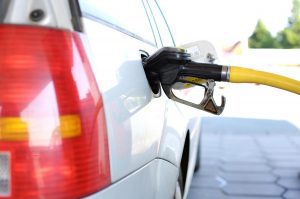
Retail sales in Germany fell by 5.4% in April compared to the previous month, according to the country’s Federal Statistical Agency (Destatis).
The rate of decline was the highest in the last year. Analysts polled by Trading Economics had, on average, expected a much smaller decline of 0.2%.
In March, the indicator decreased by 0.1%.
The reason for the accelerated decline in sales, experts say inflation, which has a negative impact on consumer spending. Food sales fell a record 7.7% last month. Sales of non-food products decreased by 4.4%, including clothing and footwear – by 4.3%.
Meanwhile, online and mail-order sales increased by 5.4%.
Retail sales in Germany in April compared to the same month last year decreased by 0.4% (after a decrease of 2.7% in March). Experts predicted growth by 4%.

Retail sales of medicines in January 2021 in monetary terms decreased 16.5% compared to January 2020, to UAH 3.117 billion, in packages they decreased by 34.2%, to 36 million units.
At the same time, according to the data provided in the SMD report, domestic manufacturers accounted for 69% of the market in volume terms, while in monetary terms, their share accounted for 35% of the market.
In packages, the top three market leaders included Darnitsa, Farmak and Kyiv Vitamin Plant.
In monetary terms, the top three dealers included Farmak, Sanofi and Darnitsa.

The volume of retail sales of oil products decreased by 20% over the week, March 14-21, a fall against the background of quarantine measures may reach 40-50% in April, Director of A-95 Consulting Group (Kyiv) Serhiy Kuyun has said.
“Over the weekend, I talked with the top managers and owners of several large fuel station chains. Everyone reported a fall in sales by 15% from the middle of the week, and by 20% or more over the weekend compared to the previous Saturday,” he wrote on his Facebook page on Monday, March 23.
According to him, the largest decline in retail sales is 40% in the western regions, primarily in Zakarpattia and Chernivtsi. At the same time, sales fell by 90% at fuel stations located close to border points.
Kuyun also said that expectations are also the same, namely sales decrease by 40-50% in April. This is very optimistic, given that in Italy fuel stations lost 70-80%.
Predicting the situation with fuel supplies to the Ukrainian market, Kuyun said that there would be no shortage of resources.
According to him, purchase prices have the potential to decrease in April by UAH 3 per liter for petrol, by UAH 2.5 per liter for diesel fuel at a rate of UAH 30/$1, and by UAH 4.2 per liter and UAH 3.7 per liter, respectively, at a rate of UAH 28/$1. At the same time, in the absence of hryvnia devaluation, a fall in the world prices for oil and oil products would lead to a decrease in purchase prices by UAH 6 per liter for petrol and UAH 5.5 per liter for diesel fuel in April, the expert said.
Due to the fall in the volume of sales of oil products against the background of quarantine, the decrease in revenue in cafes and shops, as well as the increase in the cost of operating a fuel station, namely employees’ transportation, provision of protective equipment, and disinfection of premises, a decrease in purchase prices will not lead to a change in retail prices, Kuyun said.